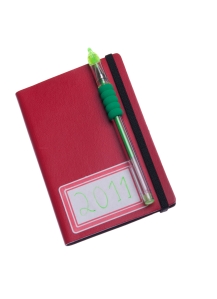Poetry Can Be Awesome.
When most people think of poetry, they think of sonnets. Now don’t leave, come on. Give a blogger a break.
A sonnet is a poem of fourteen lines using any of a number of formal rhyme schemes, in English typically having ten syllables per line. Even I have to admit that sounds tedious, but there are some very impressive sonnets out there. Someone made a play where all the dialog is in sonnet format. Shakespeare’s Love’s Labor’s Lost is completely written in sonnet format. Of course the acting becomes important to make the sonnets work. If you want to see the play in a very accessible manner I suggest the 2000 movie Love’s Labor’s Lost
Before We Go Any Further:
Remember these four things from my last post? You’ll need them!
- Poetry is intended to be read out loud.
- Poetry is useful to communicate wonderful things, and scary things too.
- Poetry can even look interesting on the page.
- Poetry isn’t frivolous and just for kids.
Poetic Forms
There’s all kinds of poetic forms. One of my favorites is the villanelle. What’s a villanelle?
Full Warning Disclaimer: This definition is the official one from Dictionary.com. I’m warning you in advance so you don’t scream. It won’t hurt you, it’s completely harmless. If you remain calm I will give you the definition for the rest of us humans afterwards.
A villanelle is a short poem of fixed form, written in tercets, usually five in number,followed by a final quatrain, all being based on two rhymes.

That picture is you screaming,”Stop it! It makes my head hurt!” So just for you, here is an easier version to understand:
In a villanelle there are two refrains and two repeating rhymes, with the first and third line of the first repeated alternately until the last stanza, which includes both repeated lines.
Here is an example (Don’t forget to read it out loud):
She spent her money with such perfect style
The clerks would gasp at each new thing she’d choose.
I couldn’t help myself: I had to smile
Or burst. Her slender purse was crocodile;
Her blouse was from Bendel’s, as were her shoes.
She spent her money with such perfect style!
I loved her so! She shopped–and all the while
My soul that bustling image would perfuse.
I couldn’t help myself: I had to smile
At her hand-knitted sweater from the Isle
Of Skye, an apres-skis of bold chartreuse.
She spent her money with such perfect style.
Enchanted by her, mile on weary mile
I tracked my darling down the avenues.
I couldn’t help myself. I had to smile
At how she never once surmised my guile.
My heart was hers–I’d nothing else to lose.
She spent her money with such perfect style
I couldn’t help myself. I had to smile.
You’ll notice I didn’t put the title with this, remember point number four. If you read this out loud, and I hope you did, did you notice how “song-like” it sounded? One of the most famous villanelles of all time is Auld Lang Syne, a drinking song for New Year’s Eve. If we didn’t have poetry, we wouldn’t have music lyrics. Since Love’s Labor’s Lost is nothing but one huge collection of sonnets, and sonnets can be sang, Kenneth Branagh made his 2000 movie version of Love’s Labor’s Lost like a 1930’s musical. It works too.
The Palindrome
Let me show you another form of poetry that anyone can do and takes no real skill, but it does take effort. I mentioned this once before in my last blog. It’s called a Palindrome.
Let me tell you a little secret about poetry and forms, you can’t really break the rules and call it a particular form, like a sonnet or villanelle. The poetry police are extremely rigid, but here is proof that even in poetry you can bend the rules, if you know how to do it right.
This one breaks the rules in one small way. It doesn’t say the same thing backward as it does when you read it forwards. It says the precise opposite when you read it in reverse order. That is so cool.
Because that poem deserves a much prettier background:
Now, here is a quiz, go back and read the villanelle I posted. What do you think the title to is? Don’t cheat and google it, think about it and post your answer. Don’t forget, point number four from the recap: Poetry isn’t just for kids.



That palindrome is neat. I’m going to guess, “Perfect Style”??
I’ve never been much for poetry but I’ve always liked Tolkien’s style – especially the octosyllabic couplets of the Lay of Leithian.
LikeLiked by 1 person
The Rapist’s Villanelle
LikeLike
I have to guess “Style with a Smile”
The palindrome was cool.
LikeLiked by 1 person
The Rapist’s Villanelle
LikeLike
Sparky and Lisa, go back and reread the villanelle now that you know the title.
LikeLike
That’s just awful! 😛
LikeLike
It’s very grim, but that was why I didn’t put the title up. Proof that in good poetry, every single word counts.
LikeLike
I did wonder about the guile line – it didn’t quite make sense before.
LikeLike
Very astute
LikeLike
Oh. Creepy. Reminds me of The Police song “every breath you take.” Certainly not a love song!
LikeLike
Exactly, but what amazes me is how much that poem changes when you add the title.
LikeLike
Absolutely.
LikeLike